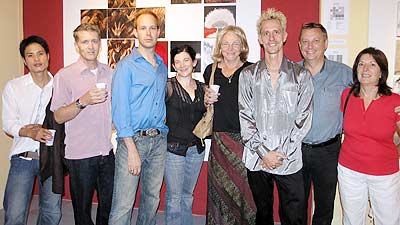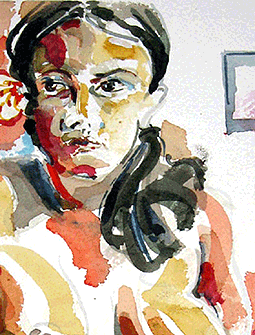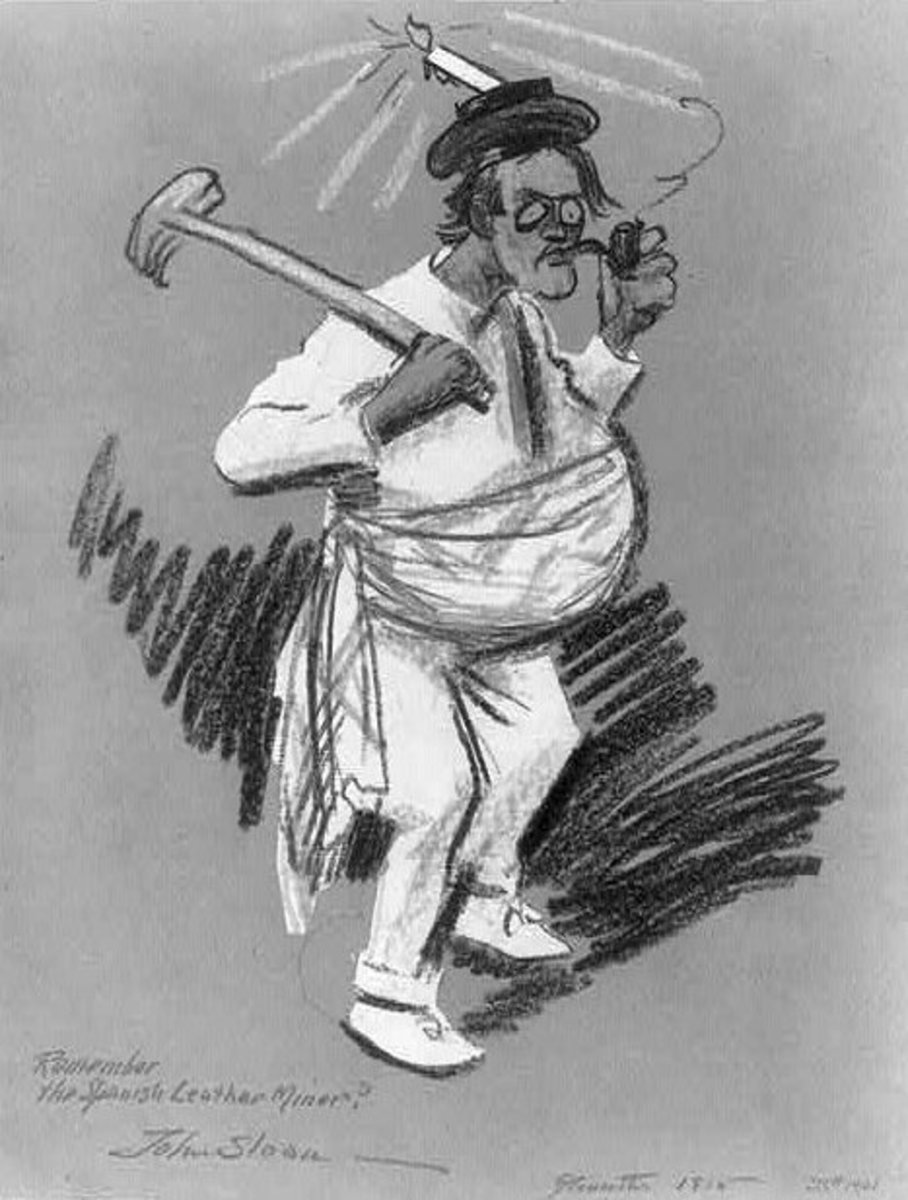Art Publicity Made Easy


How to Organize an Art Show
Most art communities are shrinking these days due the economic decline. This is a good time for communities to gather together and help one another. It isn’t a new idea, but it is a great idea that continues to work. Combining a business with an art show will help artists meet new clients and business owners show their interest in their community while attaining new clients. Everyone benefits. Even the local press will enjoy writing about something new.
I’ve been organizing art shows and art walks in my community for the past eight years with great success. Artists sell work and my own business as an independent art teacher has escalated not only in the quality of customers, but also in the amount of customers interested in taking classes and showing up to events that I organize.
Art shows are usually shown in cafes, coffee shops and restaurants. Wherever there is a lobby or wall space that is trafficked and has either a receptionist or host nearby is the perfect place for a venue. Art exhibitions can also be installed in people’s homes. If you have a nice dining area and want to serve a light meal or just wine, it is easy enough to make a small event for one or two artists in your home and bring friends and colleagues over for a new experience.
If you do not have a space of your own and would like to curate a show, ask for an appointment with the manager at your favorite business. If they stand to benefit, such as attaining new customers, press or decoration, then they may feel it’s worth a shot.
What You Will Need:
Artists
Call for Entries/Prospectus/Application
Wall Space
Timeline
Invitation list
Opening Party
How To Get Started
1. Decide what type of show you want. If you have a small space, small works are appropriate. Artists usually don’t mind making work for special shows if they like the idea. A show based on a theme can be fun, so long as the theme isn’t overdone or offensive to the community at large. Though, that said, controversy always sparks interest. And, don’t be afraid to create a show based on affordable works. But, please be respectful of artists by not using terms such as “bargain”, “cheap” or “steal”. Your show could be based on works that all sell for the same price, (Ex. The 100 Show and each work is $100.00). Another idea is to create a show where all of the work is the same size. This has been popular in recent years for galleries with small wall space or shows including many artists. Squares work well for this theme.
2. Prepare a Call For Entries/Prospectus/Application Form
Call for Entries is a basic invitation for artists to inquire for an application. It is a general statement answering Who, What, Where, When, Why and How. Briefly explain your show concept, where it is, who you are, when the show is, and why the show is happening. List the basic timeline for the project: deadline for submissions, delivery of work, opening reception, when the show will end.
Prospectus is further information. This is where you list all of your requirements and restrictions. Consider the following headings :
Eligibility (age restrictions),
Theme
Acceptable forms of art (painting, mixed media, illustration, collage, installation, sculpture, video, drawing, etc)
Deadline for Submissions
How artwork is reviewed(digital Jpegs or slides),
File format Accepted for Review (Ex. Jpeg images, 4x6 inches, Resolution 300dpi, no larger than 1.8 MB),
Confirmation (how you will tell them if they are accepted or not),
Delivery of Artwork
Framing Requirements
Pricing and Sales
Picking up unsold work
Prizes
Calendar
Detailed Timeline (submissions due, acceptance notices delivered, artwork delivery, invitations sent out, opening reception, end of show, unsold works picked up, payment to artists)
Exhibitors Commission Traditionally, the host gets a small cut of the sale. If it is not a gallery, but they are putting together an opening reception 20% - 30% is a normal commission fee.
*A fact sheet can be made including the commission and payment schedule to be signed by the artist and exhibitor in agreement of all of the above information.
Whatever is not listed in a prospectus turns into a grey area. So be specific. It is a lot of information, so make it easy to read.
Application Forms give you basic information quickly. This could either be in Adobe Acrobat, though there are a lot of glitches with this, or a Word document, which is easier to work with for everyone. Include the basics of all Contact information including email address. A short biography of the artist (200 words), an artist statement about the work they’re submitting (200 words). This is to be used if you have printed material for the show, or create a website.
3. Find local artists, or artists willing to send their work to you. Advertise on Craigslist or post flyers around town where artists hang out. This could include coffee shops or art schools. This is an easy task if you live near a university or a city. Your flyer can also double as a Call For Entries.
4. Make sure your walls look nice. Perhaps put up a new coat of white paint if necessary. If you can’t hang art into the studs on the walls, look into alternative methods of hanging. A frame shop or hardware store will be the best source of information on how to hang in walls that are difficult. Check out your lighting. If you're having an evening opening, you'll want light on the works. Track lighting is easy to install and totally worth the investment.
5. Guest list – Publicity is something that requires time over a few weeks to do properly. Send out a Press Release that is very brief explaining the basics of your show including how many artists are participating, if there is a theme, location, when the opening is and how long people can visit the show. Email, Fax or deliver to local magazines, newspapers and websites in your area. Send out a link or invitations to artists to pass around to friends and family and don’t forget to circulate invitations to your colleagues. Post flyers in the same locations that you used to find artists. Send invitations to local council people, politicians, university professors and nearby business owners. Don’t forget that this is to help stimulate local economy. Make a key publicity outlet sheet with fax/phone number and contact name. The day before the event, fax everyone on your publicity list. Call them and see if they received the release and will be attending. If they have you on their roster you can usually expect them unless larger news breaks. If they aren't sure, fax them again in the morning with a follow up call and expect to greet them and answer questions when they arrive at your event. It is customary to present the press with a press kit, or further information about what you would like them to cover.
6. Opening Party – Determine a budget. It’s fine to just open doors and let people come in. Traditionally there is wine available at openings, but it is not necessary. Cheese, crackers and vegetables are always good. If you have the time, perhaps a few friends could circulate trays with finger sandwiches or if you are having your opening at a restaurant, they can supply appetizers and perhaps a discount for those eating dinner at their establishment while the show is up.
One More Consideration
If you get children involved, not only is it positive for their self-esteem and they learn more about what happens to art after it is made, but you also bring their families in. This not only brings more potential money and viewers to the art on the walls, it also gets the community more active and open-minded. Artists usually do not mind participating in shows with children. Instead, it can be inspiring. If planned early enough, some teachers may work it into their lesson plans and create some really wonderful work for your show. Publicity is always easier to attain when school children participate. Obviously you’ll need to create a theme-appropriate art show to involve them.








